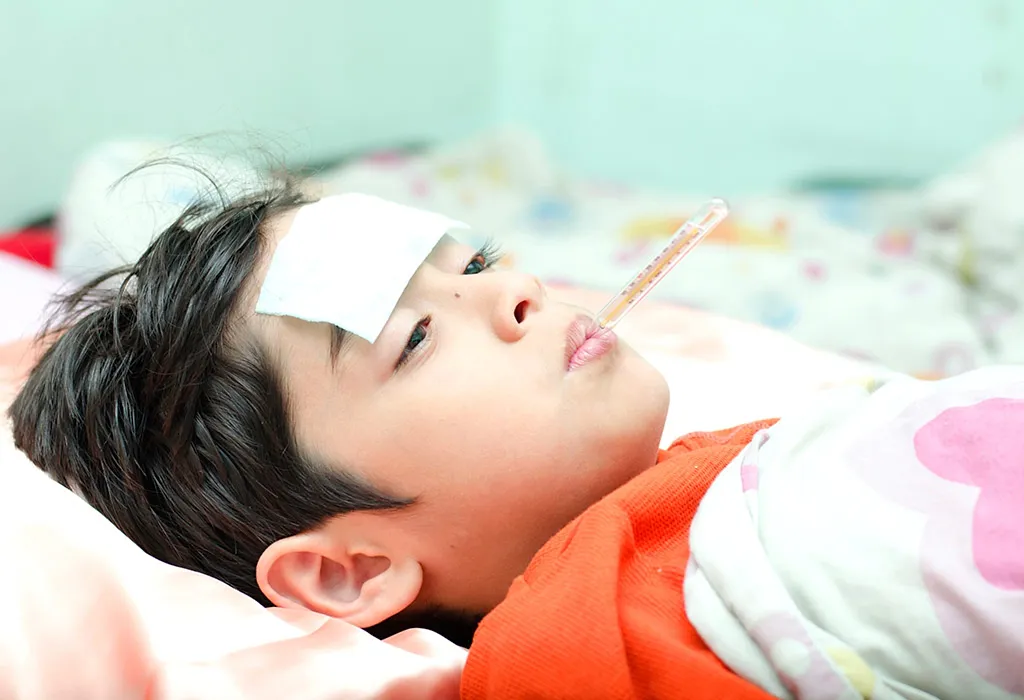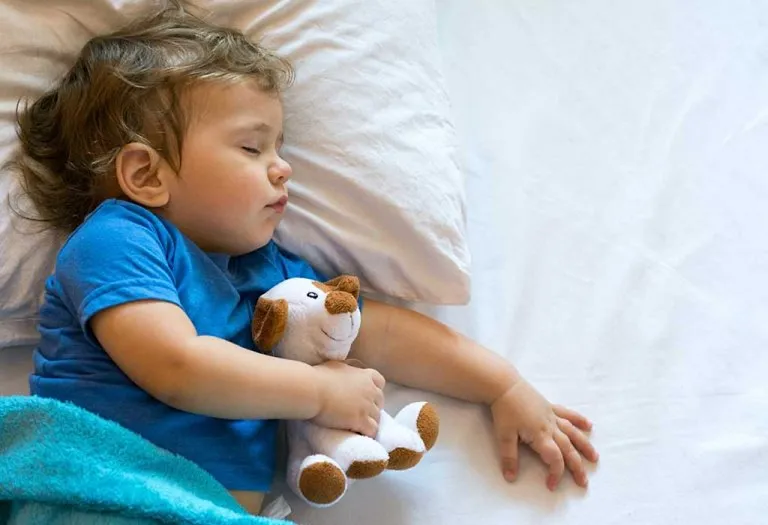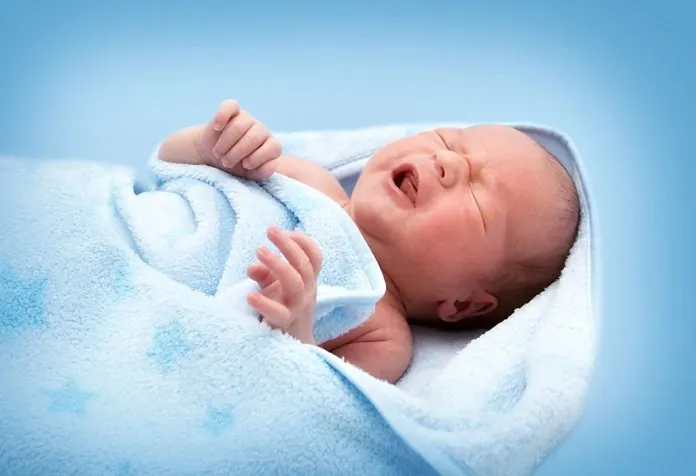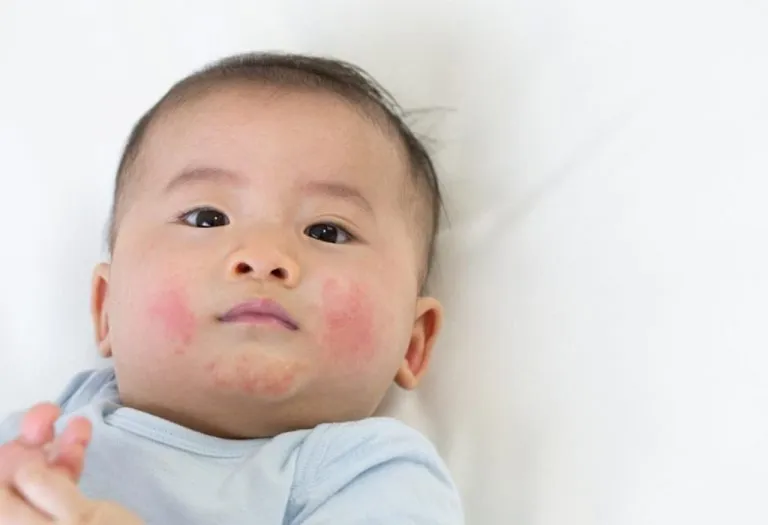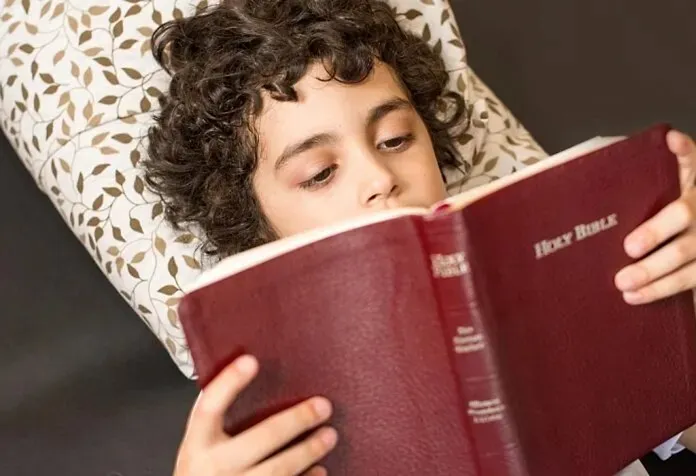How to Reduce Fever in Child Naturally – Home Remedies & Tips
Fevers are common among children, and there are several ways to reduce fever in children through home remedies. However, persistent or high fever in children requires immediate medical attention. There are several home remedies for fever in kids that are easy and quick to prepare. Fever is a self-defence mechanism of the human body to fight infections caused by viruses or bacteria. Your child may also have a fever as a reaction to a vaccine or drug or due to some inflammatory conditions. If you are looking for easy and natural ways to treat a fever at home, we might help you. In this article, learn about some safe and effective fever home remedies for children.
Facts About Fever in Children
Most parents worry about a fever and do everything to bring it down. However, the temperature reading is not the best indicator of whether a fever warrants concern. As a parent, you need to observe how comfortable your child is. If your child has a low fever and is active, you may not need to intervene at all! However, it is important to monitor a child’s food and fluid intake and urination pattern during a fever. If these are normal, there is no need to panic or rush to a paediatrician. Observe the child for signs of improvement or change. However, if your child is uncomfortable and the fever crosses 104 degrees or persists for two consecutive days, it is time to see a doctor.
Refer to the table below to understand how to calculate the temperature and when to worry about your child’s fever (1):
| Method | Age Group | Normal Range (°C) | Normal Range (°F) | Notes |
|---|---|---|---|---|
| Rectal | 0–3 years (especially above 3 months) |
36.6–38.0 | 97.9–100.4 | One of the most accurate ways to check the temperature in infants |
| Oral | Above 4 years | 35.5–37.5 | 95.9–99.5 | Wait 15 to 30 minutes after eating or drinking |
| Axillary | Any age | 36.5–37.5 | 97.8–99.5 | Slightly less accurate; easy for screening |
| Ear | Above 6 months | 35.8–38.0 | 96.4–100.4 | Quick, but technique matters; not accurate before 6 months of age |
| Forehead | Any age | 36.1–37.9 | 97.0–100.2 | Temporal artery device; simple for all |
While taking that syrup might be easy, it is not necessarily the best option. Opting for natural remedies for fever at home helps your child build immunity by boosting the body’s ability to fight an infection. Medicines are foreign substances that need to be metabolised. Moreover, medicines like Tylenol, Ibuprofen, and Advil are usually administered to reduce fever, but they may cause liver failure and other harmful side effects, such as asthma or gastrointestinal bleeding, if consumed regularly. Although aspirin is recommended for adults, it is not safe for children, and thus not recommended (2).
It is best to administer such medicines only if natural ways to reduce fever fail, or in the following cases when you must contact your paediatrician immediately:
- If the child is an infant with a fever of 100.4 degrees or more
- If the child has a weak immune system because of another issue, such as chemotherapy
- If the child’s fever lasts for two to three consecutive days without accompanying cough, cold, or pain
- If the child experiences breathing trouble along with a fever
6 Home Remedies to Treat Fever in Kids
If you wake up at night and find out that your child’s forehead feels warm, do not panic. Take a deep breath and analyse the following :
- If your baby is suffering from a cold, then he/she is likely to get a fever
- Your child can have a mild fever post-vaccination
- Babies have a fever during teething, not because of teething. During this phase, children tend to put things in their mouths, which exposes them to several microbes that may trigger an immune response, causing a fever. Teething does not cause fever (3).
Here are some effective remedies for fever in children, borrowed straight from a mother’s book! These are remedies that our mothers and grandmothers swear by and are very potent in providing relief from fever:
1. Rubbing an Onion
If you are an Indian, you must have heard your mother and grandmother preach about the medicinal benefits of onions. Onion not only helps reduce body temperature but also relieves pain during a fever. Simply cut one whole onion into thin slices and rub 2 to 3 pieces on your child’s feet for a few minutes. This process may be repeated twice a day to reduce fever. A study published in the Indian Journal of Applied Research found that applying onion slices to a child’s feet with a fever significantly lowers their temperature; thus, it should be considered a non-pharmacological approach to reducing fever in children (4).
2. Ginger Bath
Ginger has antibacterial properties that help reduce fever in children. It helps in sweating, which, in turn, helps remove body heat and toxins. Add about two tablespoons of ginger powder to a bathtub filled with warm water. The powder needs to be stirred well. You can give your ailing child a warm ginger bath. Sweating post-bath will reduce his body heat and flush out the toxins. Ginger can be an effective home treatment for fever in children. When giving a bath, avoid contact with your toddler’s eyes.
3. Chamomile Tea
Chamomile Tea is a good remedy for fever-induced tummy ache. With inflammatory and sedative properties, chamomile tea helps soothe an aching tummy (5). Boil water and soak chamomile tea leaves for a minute. Add honey to it and give your child as many drops as they can take, about two times a day. Some children do not enjoy the change of taste, so keep your fingers crossed. Please remember not to give chamomile tea or any herbal concoction to children under 1 year of age.
4. Lemon Juice Added to Honey
Vitamin C in lemon strengthens our body’s immunity. Honey provides our body with nourishment. A combination of the two is effective in reducing cough caused by fever. You can add one tablespoon of honey to one tablespoon of lemon juice. Mix it well and feed your toddler. His fever is sure to reduce.
5. Massage With Warm Garlic-infused Mustard Oil
You must have heard that mustard oil and garlic effectively reduce fever. This is indeed true. In addition, it releases body pain and helps in sweating to remove body toxins. Just heat two tablespoons of mustard oil and add one tablespoon of crushed garlic to it. Leave the mixture undisturbed for two minutes to cool down naturally. Gently massage your child’s chest, back, palms, and soles of the feet with the lukewarm mustard oil, prior to bedtime. After the oil massage, give your child a sponge bath with lukewarm water and keep them hydrated.
6. Raisin Water
Although there is no scientific evidence to suggest that raisins or raisin water treat fever, this remedy is a popular one. We suggest consulting with your doctor prior to trying this remedy. You can soak around six to seven raisins in ½ a cup of water for 1 hour. When the raisins become soft, crush them and strain the liquid. Juice from half a lime may be added to this liquid. Feed your child the raisin paste twice daily. Alternatively, you can raise water by soaking some raisins in clean drinking water and straining the water the next day for drinking.
Home Remedies for Viral Fever
Viral fevers are seasonal infections and can be taken care of at home. There are quite a few viral fever home remedies for toddlers:
1. Coriander Seeds
Phytonutrients and vitamins present in coriander (dhaniya) seeds help in building the body’s immunity. This can effectively protect your child against viral fever. Add coriander seeds to boiling water. When the solution cools down, strain it, and add milk and sugar. Serve the soothing drink to your child to reduce the fever.
2. Dill Seeds
Dill seeds contain monoterpenes and flavonoids, which act as antimicrobial agents to fight against viral fever by effectively reducing body temperature. You may prepare a decoction and feed this to your child to reduce his fever.
3. Basil Leaves
Basil or Tulsi leaves have antibiotic and germicidal properties. They are also antibacterial and fungicidal. Tulsi has been used for fighting viral fever for a long time. Boil 20 tulsi leaves in a litre of water, then add half a spoon of powdered clove. Boil the solution until it reduces to half, then feed it to your child every 2 hours.
4. Rice Starch
Rice starch acts as a diuretic agent. It helps in strengthening the body’s immune system. It promotes urination, which helps flush out bodily toxins. You can use rice starch as a home remedy to effectively reduce viral fever. Boil rice and strain it. Give the fresh, warm leftout water, i.e., rice starch, to your child.
5. Fenugreek Seeds
Fenugreek (methi) seeds contain alkaloids, saponins, and diosgenin, which bear immense medicinal values. They can effectively reduce viral infections. Soak fenugreek seeds in water overnight. Make your child sip the strained water throughout the day. It can effectively reduce fever.
6. Coconut Oil
Coconut oil also has antibacterial and antiviral properties. You can make your child consume it in small quantities by mixing it with his food.
Note: These remedies are not recommended for young children under the age of 4. Please consult your doctor before trying any home remedy.
Tips to Reduce Fever Naturally
Although it’s quite impossible to eliminate the fever immediately, there are several techniques to bring down your child’s fever without medical intervention. Please keep in mind that these are substitutes for medical treatment. If you want to know how to reduce fever in a child naturally, these could be helpful.
1. A Sponge Bath or Warm Bath
For infants, a warm sponge bath; for older children, a lukewarm bath in a tub can be really soothing during a fever. A warm bath helps regulate temperature. Water should neither be too hot nor too cold (6). Body temperature drops as water evaporates from the body. A cold water bath should be avoided during a fever. Cold water can trigger shivering and may raise the body temperature further.
Note: In the olden days, massaging with a specific type of rubbing alcohol to treat fever was a common practice. However, research indicates that alcohol can spike temperature and even lead to alcohol poisoning. This remedy is best avoided.
2. Use the Fan Judiciously
You might want to revisit the old notions, such as switching off the fan if your child has a fever. Make sure your child is placed in a well-ventilated, airy room. You can always keep the fan on to help circulate air around the child. Just lower the fan speed to keep the room temperature normal so the child does not shiver.
3. Feed Your Child at Regular Intervals
During a fever, the body requires more vitamins and electrolytes as it dehydrates. A child’s diet should include light and easily digestible food, as well as plenty of fluids, during a fever. Bone broth or chicken soup with vegetables can be fed to the child. Bone broth contains a high amount of cartilage, which aids in the production of white blood cells that protect the body against infections.
Make sure your child consumes food that is easily digestible. Feed the child every two hours initially, and when the child is better, you may reduce the frequency to once every four hours. Do not force your child to eat. Spicy, fatty, and high-fibre foods need to be avoided as they are difficult to digest. Custard, light dal, eggs, baked fish, cereals, boiled vegetables, and dry fruits are good meal choices. If you have a baby or toddler, strained bananas and mashed potatoes are perfect. Khichdi made of rice and lentils is another good option.
4. Keep Your Child Hydrated
Apart from soups and solid food, fluid intake in the form of water and juices is essential. Fruits, ORS water, milk, barley water, coconut water, and buttermilk boost the body’s energy level and give the body the needed strength to recover. For babies under 6 months of age, breastfeed or give only extra formula milk to maintain hydration (7). Do not give water to babies under 1 year. When in doubt, discuss this with your doctor, as the amount of extra feed needed will vary based on the baby’s age and weight. ORS (oral rehydration solution) also helps compensate for inadequate fluid intake, which is an essential part of fever treatment at home. An ORS should only be given to children and not babies.
5. Choose Light Clothing
During a fever, children should wear light clothing to help prevent heat loss (8). Layers of clothing aggravate fever by trapping body heat. Use a blanket if the child is shivering.
6. Stay Indoors
Do not expose your child to direct sunlight while they have a fever. Keep the child in a calm and shaded place, preferably indoors. It is better to avoid excessive exposure to public places, as a weak body is vulnerable to infections
7. Ensure Plenty of Rest and Sleep
Adequate rest and sleep can refresh the child. During rest, the body can dedicate energy to healing rather than distributing it to deal with other activities. If the child is reluctant to sleep, pick activities that limit movement, such as colouring, solving puzzles, or playing with a favourite toy. If you have time, tell them stories, watch videos together, or teach them rhymes. This way, with less movement, the body will be able to direct more energy towards healing the actual ailment
8. Saline Drops to Reduce Fever
Saline drops can be prepared by adding a ¼ tablespoon of salt to 230 mL of water. The water needs to be stirred till the salt dissolves completely. Carefully put two drops in each nostril of your child with a dropper. Administering saline drops helps clear a congested nose and reduces fever
9. Avoid Exposure to Smoke
Smoking suppresses the body’s immune system. On being exposed to smoke, the body has to fight harder against the viruses and bacteria. This increases the body temperature. Hence, ensure that your little one is not exposed to passive smoking from cigarettes, nicotine, or any other tobacco products.
10. Use a Cold Compress
Natural home remedies for fever in babies include using a cold compress. A cold compress on the forehead and nape of the neck can effectively reduce fever in toddlers. Add two tablespoons of apple cider vinegar to 4 tablespoons of cold water. Apple cider vinegar is effective at helping the body cool down. The ingredients need to be mixed well. Use a piece of clean cloth to soak the mixture for a minute. Remove excess water and place it on your child’s forehead and/or nape for a few minutes.
11. Steam Inhalation Helps
If fever is accompanied by a cold, steam can help clear the mucus that causes the fever. A steam bath can be an effective fever treatment at home. Fill the vaporiser with hot water and add a few drops of eucalyptus oil. Help your child take a breath of the steam. Breathing the warm, moist air will help remove mucus and thus reduce fever.
Dealing With Febrile Seizures
Febrile seizures are a common phenomenon amongst healthy infants and young children. Wondering what a febrile seizure is? In children aged 6 months to 5 years, high fever can be accompanied by convulsions. You may see your child drooling, rolling his eyes, or vomiting. It is also possible that their body may jerk, twitch, or become stiff. Most febrile seizures happen in children within 24 hours of getting sick. In rare cases, a child may have a seizure before developing a fever. The seizure may last from a few seconds up to 15 minutes, which is usually considered very long (9). Contact your paediatrician immediately if the seizure lasts for more than 3 minutes. Febrile seizures can be equally scary for parents and children. To comfort your child during a seizure, place him on his side. To avoid choking on vomit, turn his head carefully to one side. Do not feed him anything during the seizure, not even medicine.
Please remember that a febrile seizure in a child does not indicate epilepsy. Both have different diagnoses.
When to Call a Doctor?
If your child is experiencing a very high or persistent fever that does not respond well to medication, you should consult a doctor or your child’s paediatrician.
If your child’s fever is accompanied by any of the following symptoms, get medical attention immediately (10):
- stiffness or pain in the neck
- difficulty breathing
- dehydration
- sensitivity to light
- rash
- seizure
- extreme sluggishness or drowsiness
- stomach pain
- continuous crying
- Blue lips, tongue or nails
These markers could indicate a life-threatening infection like meningitis. Since infants and babies are highly delicate and sensitive, the threshold for seeking medical attention for them compared to adults is usually low. In general, you can seek medical treatment for a child who:
- is younger than 3 months old and has a temperature of 100.4°F (38°C) or higher
- is 3–6 months old and has a fever of 102.2°F (39°C) or higher
- has had a fever lasting longer than 5 days
- displays other signs of illness, like a rash
- shows symptoms of dehydration, such as sunken eyes, lack of tears when crying, or diapers that are not very wet
- is not eating and appears to be generally unwell
Try these Indian home remedies for fever that do not bear any harmful side effects. Try these as a first line of medication. However, if you do not see improvement or observe that the symptoms are getting worse, consult a doctor.
Also Read:
Viral Fever in Kids
Indigestion in Children
Causes of Gastritis in Kids
Home Remedies for Fever in Babies
Home Remedies for Cold & Cough in Toddlers
Was This Article Helpful?
Parenting is a huge responsibility, for you as a caregiver, but also for us as a parenting content platform. We understand that and take our responsibility of creating credible content seriously. FirstCry Parenting articles are written and published only after extensive research using factually sound references to deliver quality content that is accurate, validated by experts, and completely reliable. To understand how we go about creating content that is credible, read our editorial policy here.
1. Childrensmercy.org – Fever (Age 0-5)
3. Nemours KidsHealth – Fever (High Temperature) In Kids
5. Children’s Hospital of The King’s Daughters – Home Remedies for Sick Kids
6. Nationwide Children’s – Fever
7. Children’s Hospital Colorado – Fever (0-12 Months)
8. BetterHealth Channel – Fever
10. Cleveland Clinic – When Should You Worry About Your Child’s Fever?







